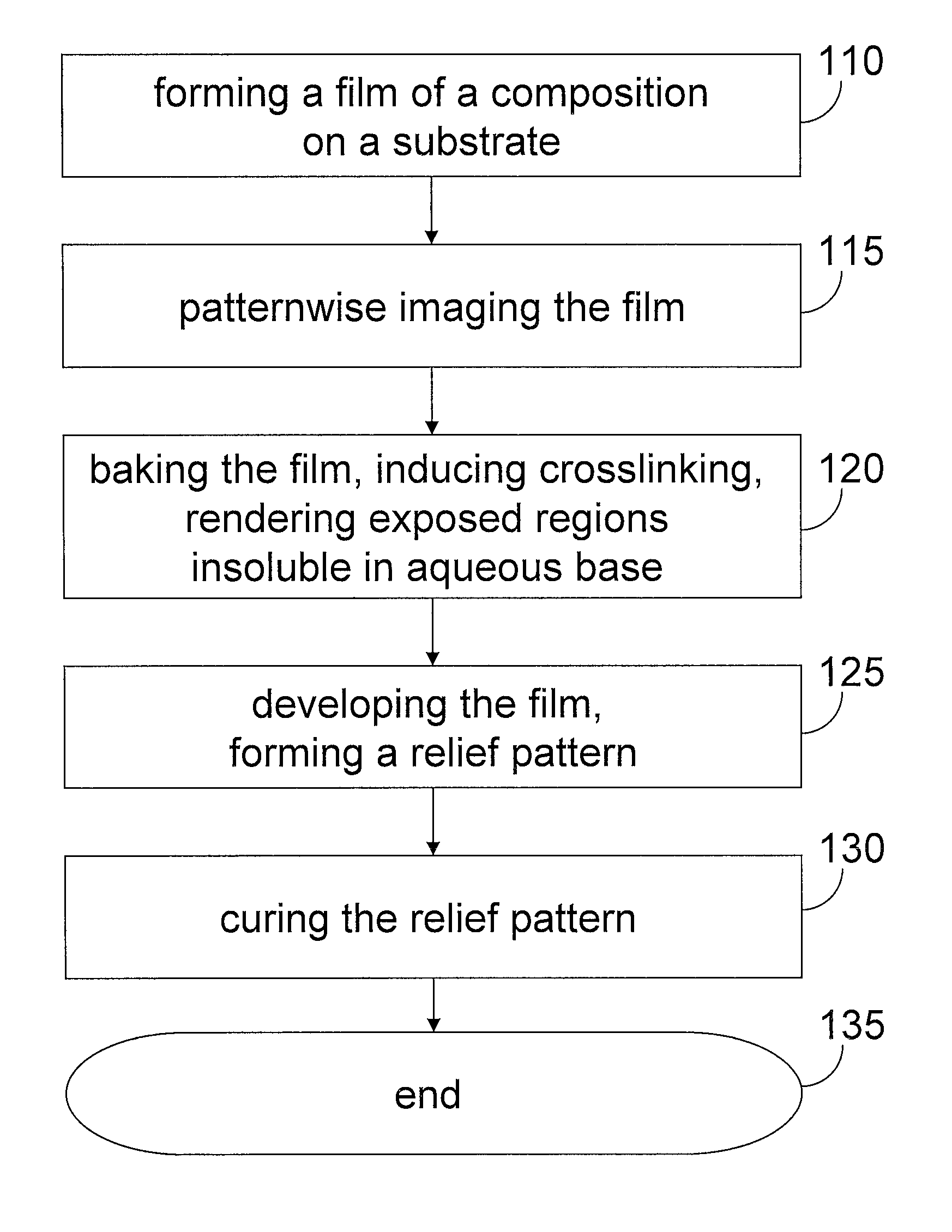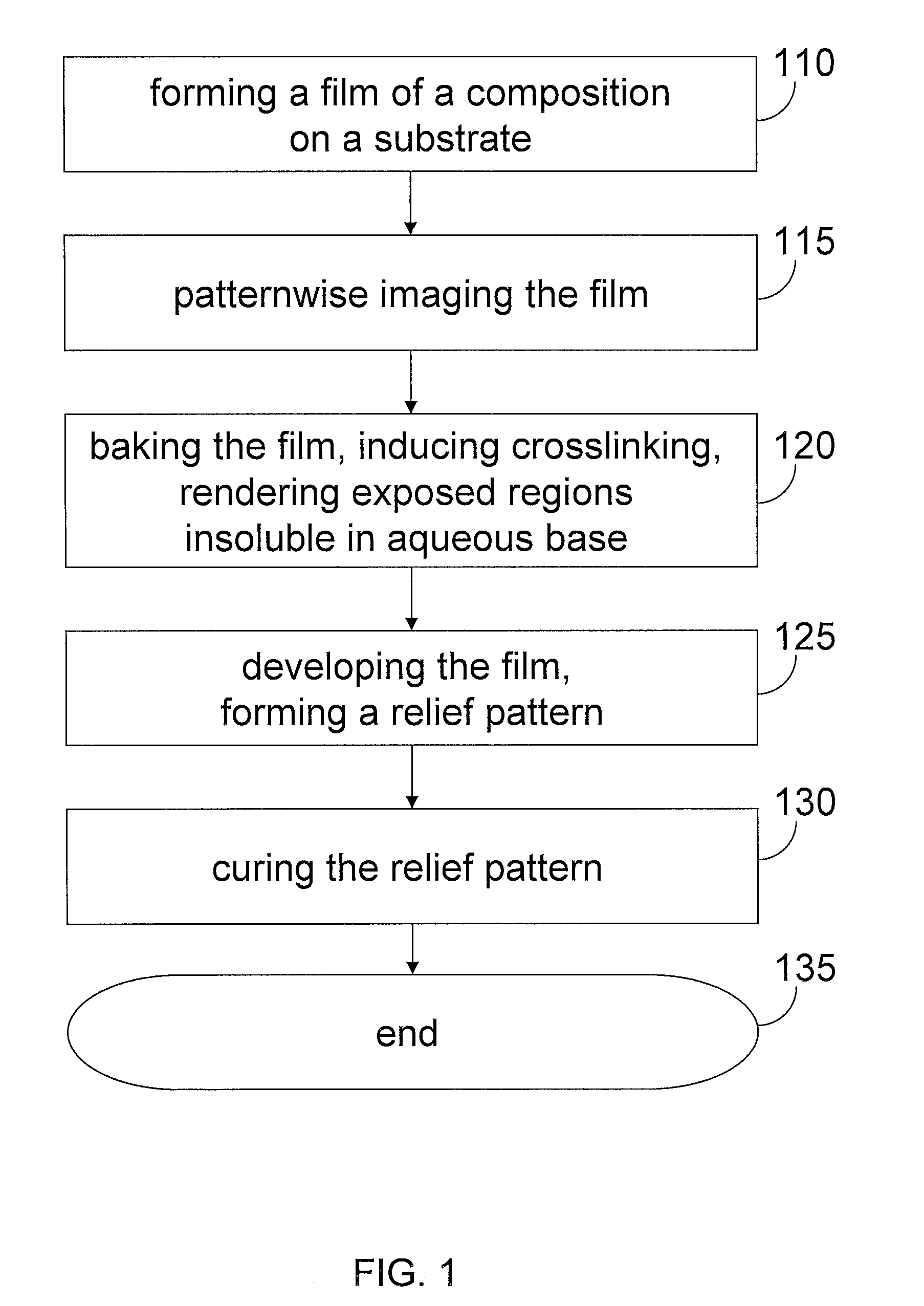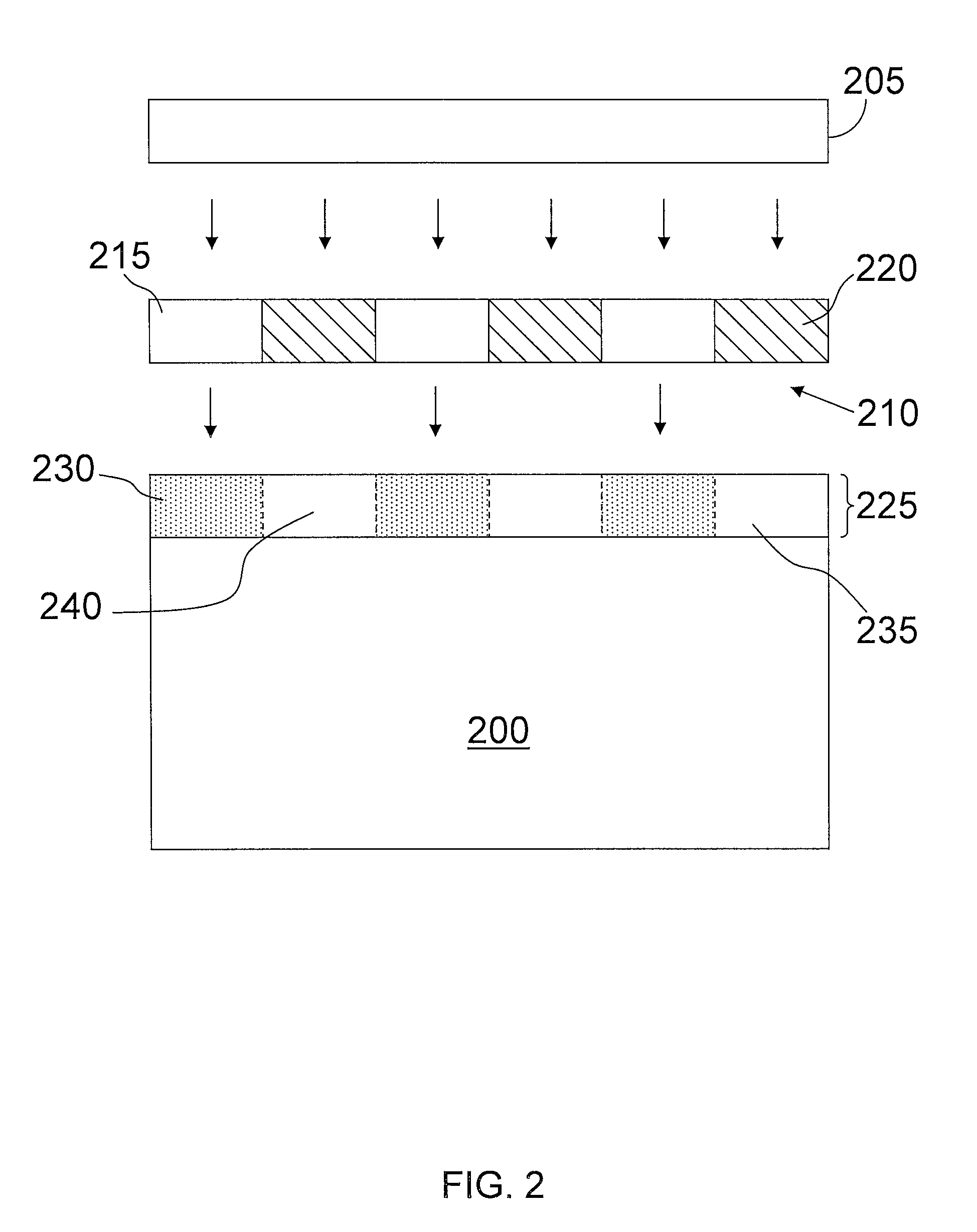Method of use for photopatternable dielectric materials for beol applications
a dielectric material and photopattern technology, applied in the field of beol applications, can solve the problems of increasing signal delays in ulsi electronic devices, complex and inefficient processes,
- Summary
- Abstract
- Description
- Claims
- Application Information
AI Technical Summary
Problems solved by technology
Method used
Image
Examples
example 1
Synthesis of Poly(4-hydroxy-α-methylbenzylsilsesquioxane-co-α-methylbenzylsilsesquioxane)
[0052](6:4 pHMBS / MBS).
[0053]A mixture of 1-trichlorosilyl-1-(4-acetoxyphenyl)-ethane (223.2 grams; 0.75 mole), 1-trichlorosilyl-1-phenyl-ethane (125.8 grams; 0.525.1 mole), and 389 grams (g) of anhydrous tetrahydrofuran were added drop-wise to a rapidly stirred mixture of triethylamine (307.7 g; 4.2075 mole) and 389 g of deionized water while cooling with an ice bath to maintain the reaction temperature between about 0° C. and about 10° C. After the addition was complete, the mixture was stirred at a temperature between about 0° C. and about 10° C., for one hour. The cooling bath was removed and the mixture was allowed to warm to room temperature and stir for about 20 hours. The reaction mixture was placed in a separatory funnel and the lower layer was separated and retained. The upper layer was diluted with about 900 milliliters (ml) deionized water and extracted three times with about 450 ml o...
example 2
Synthesis of Poly(4-hydroxy-α-methylbenzylsilsesquioxane-co-α-methylbenzylsilsesquioxane)
[0056](6:4 pHMBS / MBS) (Reduced Ion Content Process)
[0057]A mixture of 1-trichlorosilyl-1-(4-acetoxyphenyl)-ethane (223.2 g; 0.75 mole), 1-trichlorosilyl-1-phenyl-ethane (125.8 g; 0.525.1 mole), and 389 g of anhydrous tetrahydrofuran were added drop-wise to a rapidly stirred mixture of triethylamine (307.7 g; 4.2075 mole) and 389 g of deionized water while cooling with an ice bath to maintain the reaction temperature between about 0° C. and about 10° C. After the addition was complete, the mixture was stirred at a temperature between about 0° C. and about 10° C., for one hour. The cooling bath was removed and the mixture was allowed to warm to room temperature and stir for about 20 hours. The reaction mixture was placed in a separatory funnel and the lower layer was separated and retained. The upper layer was diluted with about 900 ml deionized water and extracted three times with about 450 ml of...
example 3
Photopatternable Blend Composition
[0060]A patternable low-k composition was formulated with 60 g of a 20 wt % solution of 6:4 pHMBS / MBS in propylene glycol monomethyl ether acetate (PGMEA), 40 g of a 20 wt % solution of the silsesquioxane copolymer LKD-2021, 2 g of a 20 wt % solution of triphenylsulfonium nonaflate in PGMEA, and 2 g of a 0.5 wt % solution of an organic base such as trioctylamine in PGMEA. The resulting patternable low-k formulation was filtered through a 0.2 micron (μm) filter.
[0061]The patternable low-k composition was spin coated (30 seconds at 2000 rpm) onto an 8 inch silicon wafer to produce an approximately 0.6 μm film. The wafer and film were pre-exposure baked at about 110° C. for about 60 seconds (s), pattern-wise exposed to 248 nm deep ultraviolet (DUV) light on an ASML (0.63 NA, 5 / 8 annular) DUV stepper, and then post exposure baked at 110° C. for 60 s. This was followed by two 30 s puddle development steps with 0.26 N TMAH developer to resolve 0.250 μm li...
PUM
| Property | Measurement | Unit |
|---|---|---|
| Temperature | aaaaa | aaaaa |
| Temperature | aaaaa | aaaaa |
| Temperature | aaaaa | aaaaa |
Abstract
Description
Claims
Application Information
 Login to View More
Login to View More - R&D
- Intellectual Property
- Life Sciences
- Materials
- Tech Scout
- Unparalleled Data Quality
- Higher Quality Content
- 60% Fewer Hallucinations
Browse by: Latest US Patents, China's latest patents, Technical Efficacy Thesaurus, Application Domain, Technology Topic, Popular Technical Reports.
© 2025 PatSnap. All rights reserved.Legal|Privacy policy|Modern Slavery Act Transparency Statement|Sitemap|About US| Contact US: help@patsnap.com



